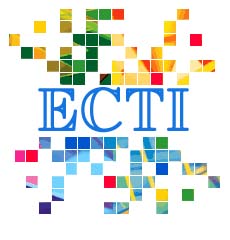Robust Digital Control for Boost DC-DC Converter
Main Article Content
Abstract
If the duty ratio, load resistance and input voltage in boost DC-DC converter are changed, the dynamic characteristics is varied greatly, that is, boost DCDC converter has non-linear characteristics. In many applications of DC-DC converters, the load cannot be specified in advance, and it will be changed suddenly from no load to full load. In the boost DCDC converter system used a conventional single controller cannot be adapted to change dynamics and it occurs large output voltage variation. In this paper, an approximate 2-Degree-of-Freedom (2DOF) digital controller for suppressing the change of step response characteristics and variation of output voltage in the load sudden changes is proposed. Experimental studies using micro-processor for controller demonstrate that this type of digital controller is effective to suppress variations.
Article Details
This journal provides immediate open access to its content on the principle that making research freely available to the public supports a greater global exchange of knowledge.
- Creative Commons Copyright License
The journal allows readers to download and share all published articles as long as they properly cite such articles; however, they cannot change them or use them commercially. This is classified as CC BY-NC-ND for the creative commons license.
- Retention of Copyright and Publishing Rights
The journal allows the authors of the published articles to hold copyrights and publishing rights without restrictions.
References
[2] S. Hiti, and D. Borojevi´c, “Robust Nonlinear Control for Boost Converter,” IEEE transactions on power electronics, Vol.10, No.6, pp.651-658, 1995.
[3] P. Mattavelli, “Digital Control of dc-dc Boost Converters with Inductor Current Estimation,” IEEE Applied Power Electronics Conference and Exposition, pp.74-80, 2004.
[4] C. Kranz, “Complete Digital Control Method for PWM DC-DC Boost Converter,” IEEE Power Electronics Specialist Conference 2003, pp.951-956, 2003.
[5] J. A. Ramirez, I. Cervantes, G. E. Perez, P. Maya, and A. Morales, “A Stable Design of PI Control for DC-DC Converters with an RHS Zero,” IEEE transactions on circuits and systems, Vol.48, No.1, pp.103-106, 2001.
[6] J. Roh, “High-Performance Error Amplifier for Fast Transient DC-DC Converters,” IEEE transactions on power electronics, Vol.52, No.9, pp.591-595, 2005.
[7] H. K. Lam, T.H.Lee, F. H. F. Leung and P. K. S. Tam, “Fuzzy Control of DC-DC Switching Converters Stability and Robustness Analysis,” IEEE IECON 2001, pp.899-902, 2001.
[8] F. B. Cunha and D. J. Pagano, “Limitations in the Control of a DC-DC Boost Converter,” IFAC 15th Triennia World Congress, pp.216-222, 2002.
[9] C. Chan, “A Nonlinear Control for DC-DC Power Converters,” IEEE transactions on power electronics, Vol.22, No.1, pp.216-222, 2007.
[10] P. Gupta and A. Patra, “Hybrid Sliding Mode Control of DC-DC Power Converter Circuits,” IEEE TENCON 2003, pp.259-263, 2003.
[11] A. Kugi and K. Schlacher, “Nonlinear H∞-Controller Design for a DC-to-DC Power Converter,” IEEE transactions on control systems technology, vol.7, No.2, pp.230-237, 1999.
[12] K. Higuchi, K. Nakano, T. Kajikawa, E. Takegami, S. Tomioka, K. Watanabe, “A New Design of Robust Digital Controller for DCDC Converters,” IFAC 16th Triennial World Congress, (CD-ROM), 2005.
[13] K. Higuchi, E. Takegami, K. Nakano, T. Kajikawa, S. Tomioka, “Digital Robust Control for DC-DC Converter with Second-Order Characteristics,” ECTI-CON'2009, pp.161-169, 2009.
[14] S. Sasaki, and H. Watanabe, “Analysis of Multiple Operating Points for Dynamical Control of Switching Power Converters,” IEIC Technical Report, pp.33-38, 2005.


